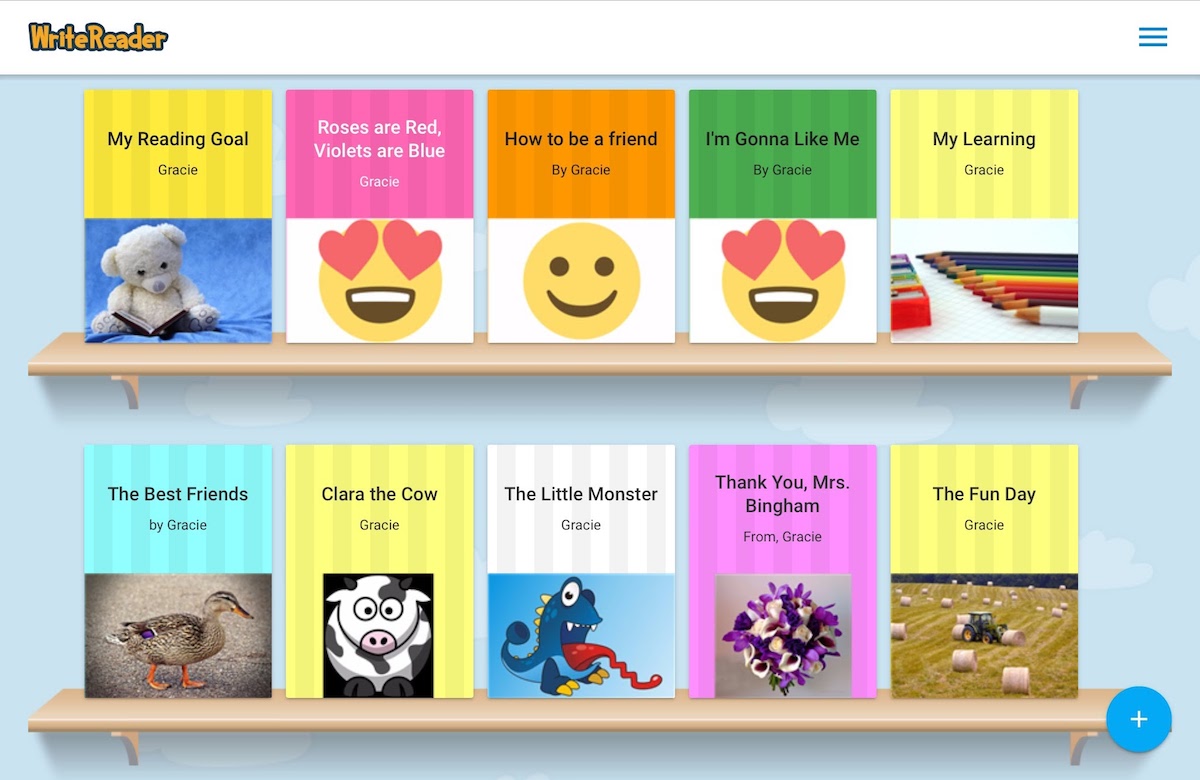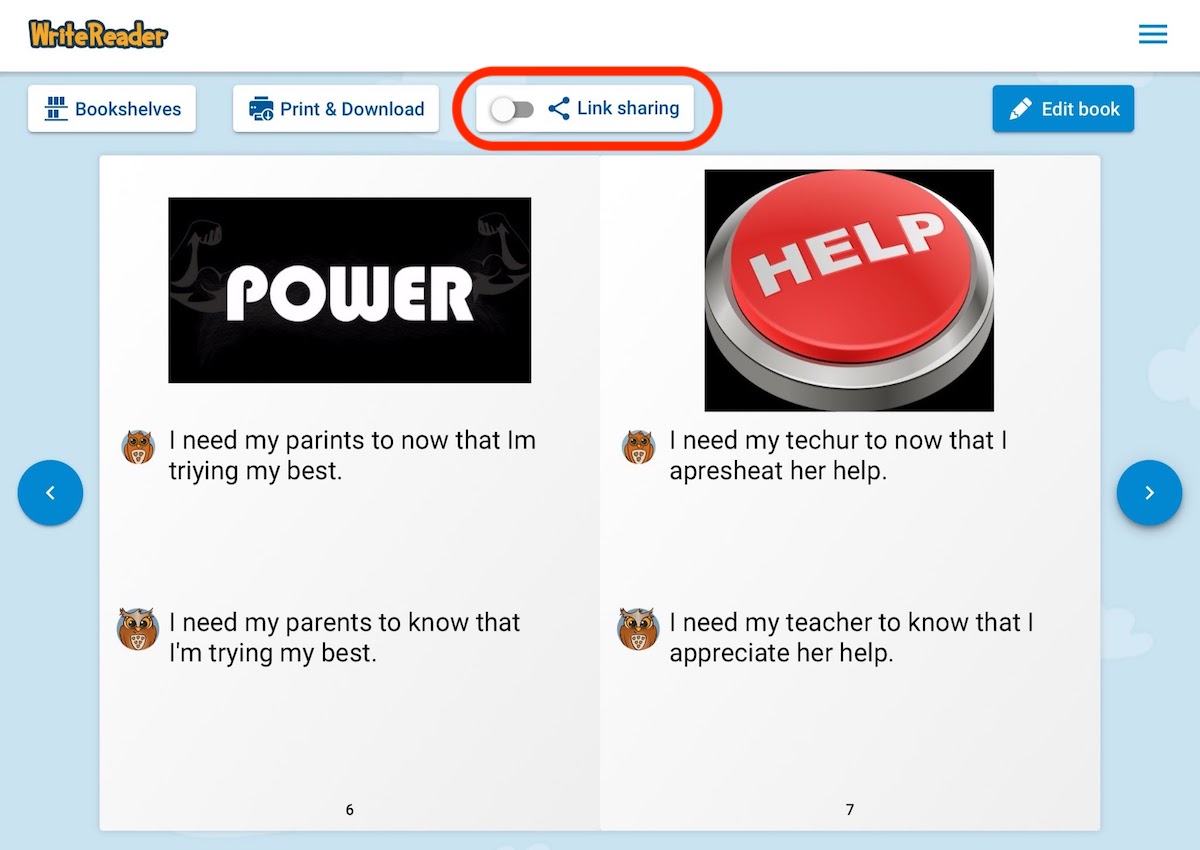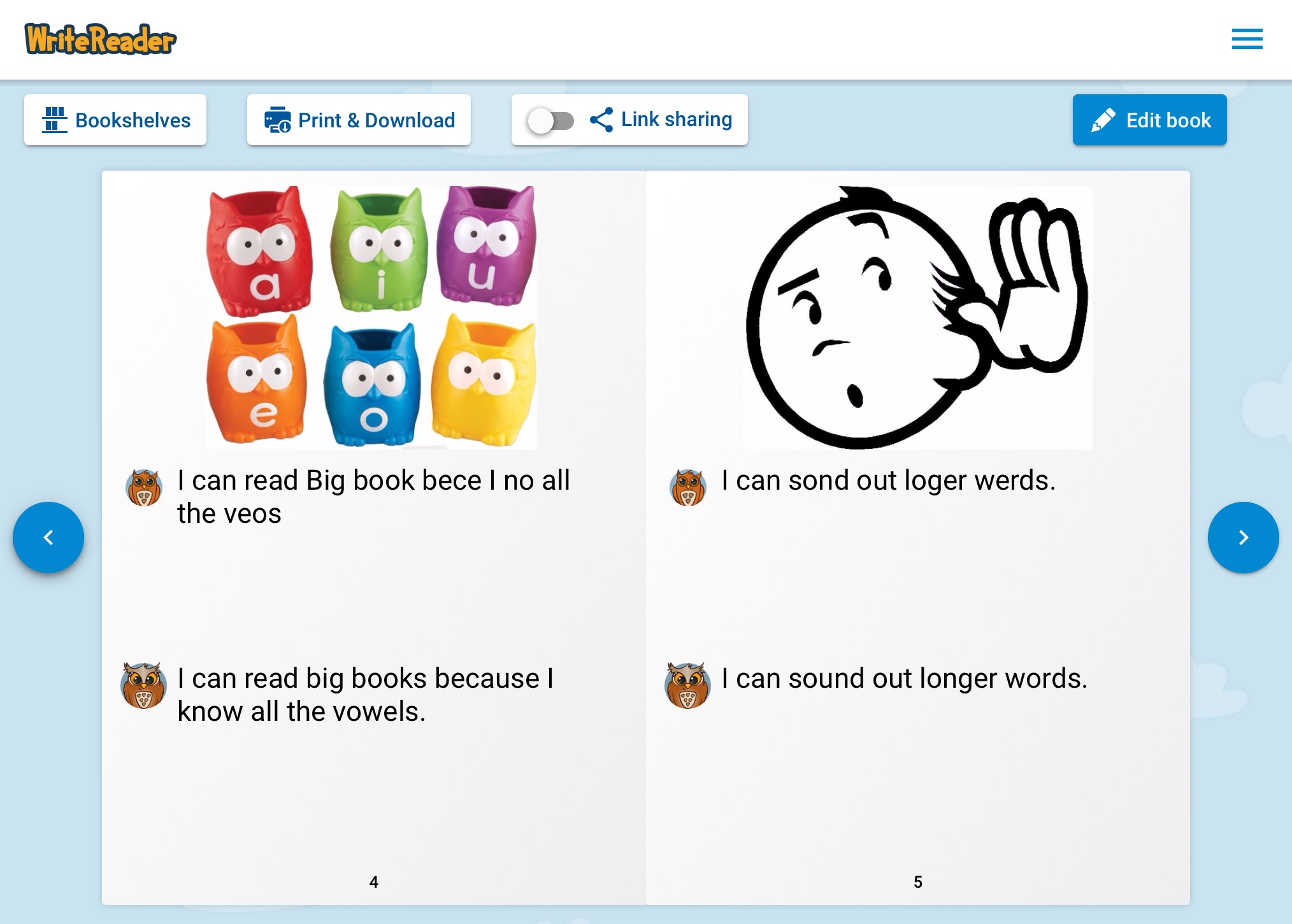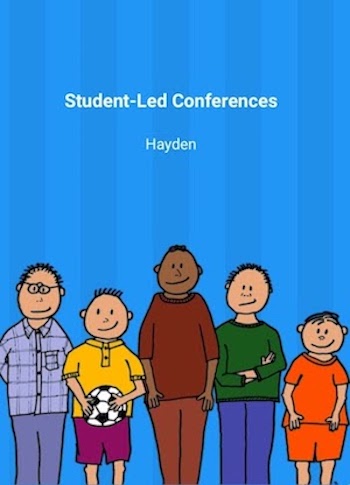Formative assessment is when a teacher analyzes a range of student work, including assignments, class work, tests, and writing. A teacher may look at a journal entry from January and another from February. They then compare the work samples to see how the student has progressed but, more importantly, how they might modify their teaching to help them achieve mastery. What concept has been learned? What’s lacking? For example, if a student is consistently misspelling words with an ‘er’ ending, this needs to be retaught. Each student’s bookshelf in WriteReader is a collection of formative assessments, and teachers or parents can give direct feedback in the adult writing section.

WriteReader can also be utilized in assessments customized to individual learners’ needs. No two brains are alike, and expecting the same standards or strategies to work for every learner is a recipe for disaster. One way to ensure that the formative assessments are catered to the learner’s needs and provide functional results is to incorporate the UDL (universal design of learning) guidelines into assessment planning.
Digital portfolios
Digital portfolios are very popular in education today because they efficiently communicate student learning with parents. Our calendars are full, and our lives are busy. However, even if you can’t connect in person, you can easily write comments or upload photos or files of student work. This way, the parents can view it when it’s convenient for them and respond in turn. Check out this past blog post where one of our WriteReader ambassadors, Sophia Garcia-Smith, explains how to share WriteReader books to Seesaw.
You can also share WriteReader books digitally in other ways too. There is built-in link sharing, and a link is automatically assigned to each student creation. The teacher can turn the link sharing on and copy the link. The link can then be shared via email or text with parents or other teachers. It can also be shared within Google Classroom.
By sharing digitally with all stakeholders, the assessment is transparent. If you are a literacy support teacher or ELL teacher working with students outside of the regular classroom, the work samples can be shared with the classroom teacher, and both can use this evidence of learning to assess collaboratively. Also, if a parent questions the report card, the work samples live online and can be used to show how the comments reflect the work.

Summary of Learning
You can also use WriteReader for students to give a summary of learning. This may be a book collection of ‘exit tickets’. Students must write one page at the end of the week to summarize their learning. Over time, the book grows and curates their reflections.
Students can use the record feature to expand their explanations and make their thinking visible. So even if the student is very young or has low written output, they can give an oral representation of learning within their book.
Another WriteReader ambassador, Rabia Iqbal, uses WriteReader for cumulative projects at the end of a unit so that students can demonstrate their learning of the material. She shared that her Grade 3 students ‘studied Hans Christian Andersen and fairy tales. After that, their assignment was to write a biography about the Danish author’s life using WriteReader, and they did so successfully!’ We think the best word in that sentence is ‘successfully’. How wonderful that assessment need not be painful for teachers or students!

Report card supplements
Future-ready education invites students to be reflective learners. Therefore, students should participate in goal-setting and self-assessment at all levels. By developing critical thinking competencies in children, we are helping them analyze their learning experiences and outcomes. This prepares them to think about their thinking (metacognition) and how they learn. Once this is developed, children can apply this to all aspects of their learning, in and outside of school. Students can create self-assessment books, which can be included in the report card envelope. Parents and administrators love reading the students’ comments too.

Student-led conferences
Many schools have student-led conferences in addition to parent-teacher conferences. In advance of these conferences, teachers often give students time to prepare. In addition to displaying work, students could make books with their talking points listed. This would act as a guide for the students so that they can remember everything that they hope to show their parents. Parent feedback can be provided on the final page. It would conclude the student-led conference and make a nice memento to take home.

Assessment can be dry and boring, but it doesn’t need to be. Including parents and students in the process can make it personal and meaningful for everyone involved.
Happy reading and writing!
